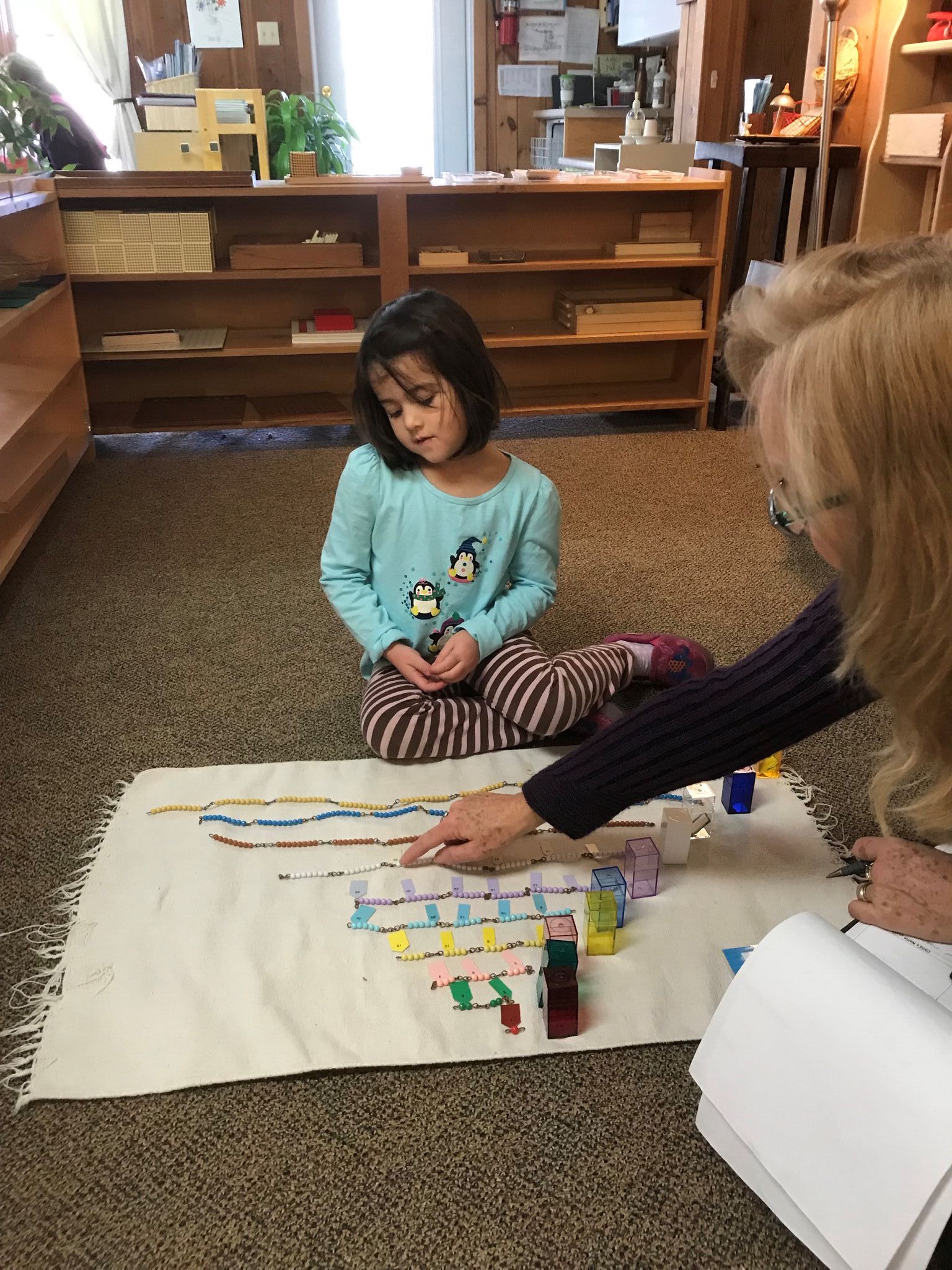The Montessori Method
As children make choices and become engaged with their work, they acquire a positive attitude toward learning that sets the foundation for life-long education.
One of the foundations of Montessori education is that the classroom is a carefully prepared environment aligned with young children’s cognitive and social needs. This structured environment allows children to manage their own learning and to progress at their own pace. In our classrooms, children are taught where to find materials, how to use them, and how to use them with others. As children learn, they are introduced to new materials and are taught how to use familiar materials in new ways.
As self-directed learners, children are always free to move about the classroom and to collaborate with their peers. On any given day, children may choose to work in small groups, in pairs, or alone when they need to concentrate. Sometimes a child will just watch another child at work, which can make new challenges seem less intimidating. Our mixed-age classrooms allow kindergartners to take on leadership roles, and they are often eager to pass on lessons they have learned to their younger friends. Through these varied social experiences, children learn how to be respectful of others and responsible for themselves.
The Montessori Principles
“Our care of the children should be governed not by the desire to ‘make them learn things’, but by the endeavor always to keep burning within them, the light which is called intelligence.”
Montessori education is based Maria Montessori’s beliefs about child development. Primary amongst her beliefs are that children can discover abstract concepts through experience with concrete materials. As such, children in our classrooms work with carefully designed materials that allow them to build important skills while constructing their own knowledge about the world around them.
Montessori also placed a great deal of importance on children learning how to maintain their own individuality while also learning how to become part of a larger community. Our teachers model grace and courtesy, and weave lessons on how to treat others throughout much of the curriculum.
Maria Montessori also stressed the importance of freedom, but freedom within established limits. To her, true freedom meant taking responsibility for one’s self and cultivating the self-discipline that allows one to make choices based on what will be the good for the self and for the community over the long term.
At UMS, these principles are the foundation upon which we build child-centered classrooms that value each child and what they bring to our unique community.
History of Montessori
The story of Montessori begins with one remarkable woman–
Maria Montessori, the first woman medical doctor in Italy, was one of the great pioneers in the study of child development. Upon graduation from Rome Medical School in 1896, she worked with mentally deficient children, many of whom were then able to pass the standard educational exams of the time.
Dr. Montessori applied rigorous scientific study to her observations and in 1908 began her innovative approach with a group of children in the slum area of San Lorenzo in Rome. Within a year, her accomplishments with these children earned world wide acclaim and became a landmark in the education of young children. She trained a generation of teachers and wrote 25 books on her theory and practice.
Today Montessori schools flourish all over the world–
Montessori education is based on beliefs about human development and human relationships and incorporates practices to facilitate teaching and learning. Respect is fundamental — respect for each person, for the environment and for life. Respect leads to trust, which is essential for learning and growth. Learning and teaching are inseparable, as are self, family, and the world community.
In the Montessori approach, children are given ample time and opportunities to explore and work at their own pace and in their own learning style. Classroom activities are designed to encourage involvement, autonomy and risk-taking. As children make choices and get involved with their work, they acquire a positive attitude toward learning that sets the foundation for all schooling and for life.


